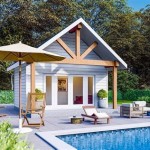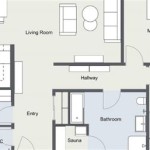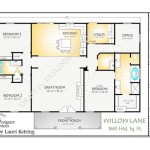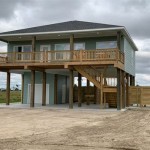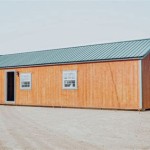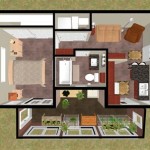Creating a house floor plan is the process of designing the layout of a house, including the arrangement of rooms, hallways, and other spaces. A house floor plan is an important tool for builders and homebuyers, as it provides a visual representation of the house’s layout and helps to ensure that the house is functional and meets the needs of the people who will be living in it.
There are many different software programs that can be used to create a house floor plan, and there are also many different factors to consider when designing a floor plan. These factors include the size and shape of the lot, the number of bedrooms and bathrooms, the desired flow of traffic through the house, and the placement of windows and doors.
Once a floor plan has been created, it can be used to create a building permit and to obtain financing for the construction of the house. A floor plan can also be used to help with the interior design of the house, as it can help to determine the placement of furniture and other items.
When creating a house floor plan, there are several important points to consider:
- Functionality: The floor plan should be designed to meet the needs of the people who will be living in the house.
- Flow: The flow of traffic through the house should be smooth and efficient.
- Space: The floor plan should make efficient use of space, without feeling cramped or cluttered.
- Privacy: The floor plan should provide privacy for the people who will be living in the house.
- Light: The floor plan should take advantage of natural light, and artificial light should be used to supplement natural light where necessary.
- Views: The floor plan should take advantage of views from the windows.
- Outdoor space: The floor plan should include outdoor space, such as a patio or deck.
- Budget: The floor plan should be designed within the budget for the project.
- Zoning: The floor plan should comply with local zoning regulations.
By considering these factors when creating a house floor plan, you can ensure that the house will be functional, comfortable, and enjoyable to live in.
Functionality: The floor plan should be designed to meet the needs of the people who will be living in the house.
The floor plan should be designed to meet the specific needs of the people who will be living in the house. This includes considering the number of people who will be living in the house, their ages, and their lifestyles. For example, a family with young children will need a floor plan that includes a playroom or family room, while a couple of retirees may prefer a floor plan with a home office or library.
- The floor plan should provide adequate space for the activities that will take place in the house. For example, if the family enjoys cooking and entertaining, the kitchen should be large enough to accommodate a dining table and chairs. If the family has a lot of hobbies, there should be a dedicated space for hobbies, such as a craft room or workshop.
- The floor plan should be designed to minimize traffic flow. For example, the kitchen should be located near the dining room and living room, and the bedrooms should be located away from the main living areas.
- The floor plan should provide privacy for the people who will be living in the house. For example, the bedrooms should be located away from the main living areas, and the bathrooms should be designed to provide privacy.
- The floor plan should be designed to be accessible for people with disabilities. For example, the doorways should be wide enough to accommodate a wheelchair, and the bathrooms should be designed to be accessible for people with disabilities.
By considering the needs of the people who will be living in the house, you can create a floor plan that is functional and comfortable.
Flow: The flow of traffic through the house should be smooth and efficient.
The flow of traffic through the house should be smooth and efficient to avoid congestion and to make it easy to get around. This means that the rooms should be arranged in a logical order, and that there should be clear pathways between the rooms.
- The entryway should be located near the front door. This will make it easy for guests to enter and leave the house, and it will also help to keep the rest of the house clean.
- The living room and dining room should be located near the entryway. This will make it easy for guests to socialize and to move between the two rooms.
- The kitchen should be located near the dining room. This will make it easy to serve food and to clean up after meals.
- The bedrooms should be located away from the main living areas. This will help to provide privacy for the people who are sleeping.
By following these tips, you can create a floor plan that has a smooth and efficient flow of traffic.
Space: The floor plan should make efficient use of space, without feeling cramped or cluttered.
Every square foot of space in your house should be used efficiently, without feeling cramped or cluttered. This means that you need to carefully consider the size and shape of each room, as well as the placement of furniture and other objects.
One way to make efficient use of space is to use multi-purpose furniture. For example, a coffee table with built-in storage can be used to store books, magazines, and other items. A sofa bed can be used for both seating and sleeping. A kitchen island can be used for food preparation, dining, and storage.
Another way to make efficient use of space is to use vertical space. For example, you can install shelves on the walls to store books, DVDs, and other items. You can also use stackable bins to store items in closets and pantries.
Finally, it is important to avoid cluttering your house with unnecessary items. Only keep the items that you need and use on a regular basis. Donate or sell the items that you no longer need.
By following these tips, you can create a floor plan that makes efficient use of space, without feeling cramped or cluttered.
Privacy: The floor plan should provide privacy for the people who will be living in the house.
Privacy is an important consideration when creating a house floor plan. The floor plan should be designed to provide privacy for the people who will be living in the house, both from each other and from the outside world.
There are several ways to design a floor plan for privacy. One way is to group the bedrooms together in one area of the house. This will help to create a sense of privacy for the people who are sleeping.
Another way to design a floor plan for privacy is to use hallways and other buffer spaces to separate the different rooms in the house. This will help to reduce noise and visual distractions between the different rooms.
Finally, it is important to consider the placement of windows and doors when designing a floor plan for privacy. Windows and doors should be placed in a way that minimizes the amount of visibility from the outside world into the house.
By following these tips, you can create a floor plan that provides privacy for the people who will be living in the house.
Light: The floor plan should take advantage of natural light, and artificial light should be used to supplement natural light where necessary.
Natural light is essential for a healthy and comfortable home. It can help to improve mood, reduce stress, and boost productivity. When designing a house floor plan, it is important to take advantage of natural light by placing windows and doors in a way that maximizes the amount of light that enters the house.
- Windows should be placed on the south side of the house. The south side of the house receives the most sunlight, so placing windows on this side of the house will help to maximize the amount of natural light that enters the house.
- Windows should be large enough to allow plenty of light to enter the room. Small windows will not allow as much light to enter the room, so it is important to choose windows that are large enough to provide adequate lighting.
- Windows should be placed high on the wall. This will help to distribute the light evenly throughout the room and will prevent the light from being blocked by furniture or other objects.
- Artificial light should be used to supplement natural light where necessary. In some cases, it may not be possible to get enough natural light into a room, so it is important to use artificial light to supplement natural light. When choosing artificial light, it is important to choose light bulbs that emit a warm, natural light.
By following these tips, you can create a floor plan that takes advantage of natural light and provides a bright and comfortable home.
Views: The floor plan should take advantage of views from the windows.
One of the best ways to enjoy the beauty of your surroundings is to have a house floor plan that takes advantage of views from the windows. This can be done by placing windows in rooms where you will spend the most time, such as the living room, dining room, and bedrooms.
When placing windows to take advantage of views, it is important to consider the following factors:
- The orientation of the house. The orientation of the house will determine which direction the windows will face. If you want to take advantage of views of a particular landscape feature, such as a mountain range or a lake, you will need to place windows on the side of the house that faces that feature.
- The size of the windows. The size of the windows will determine how much of the view you will be able to see. If you want to maximize the amount of view that you can see, you will need to choose large windows.
- The placement of the windows. The placement of the windows will determine how well you will be able to see the view. If you want to be able to see the view from a sitting or standing position, you will need to place the windows at a height that is comfortable for you.
By following these tips, you can create a house floor plan that takes advantage of views from the windows and provides you with a beautiful and inspiring home.
Outdoor space: The floor plan should include outdoor space, such as a patio or deck.
Outdoor space is an important part of any home. It provides a place to relax, entertain guests, and enjoy the fresh air. When designing a house floor plan, it is important to include outdoor space, such as a patio or deck.
- A patio is a paved area that is typically located outside the back door of the house. Patios are a great place to relax and entertain guests. They can be used for dining, grilling, or simply enjoying the outdoors.
- A deck is a raised platform that is typically made of wood or composite materials. Decks are a great place to enjoy the outdoors, and they can also be used for dining and entertaining. Decks are often located off the back of the house, but they can also be located on the side or front of the house.
- When choosing a location for your outdoor space, it is important to consider the following factors:
- The orientation of the house. The orientation of the house will determine how much sun your outdoor space will receive. If you want to have a sunny outdoor space, you will need to choose a location that faces south.
- The size of the outdoor space. The size of the outdoor space will determine how many people you can accommodate. If you plan on entertaining guests, you will need to choose a large outdoor space.
- The privacy of the outdoor space. The privacy of the outdoor space will determine how comfortable you will be using it. If you want a private outdoor space, you will need to choose a location that is not visible from the street or from neighboring properties.
- Once you have chosen a location for your outdoor space, you can start to design it. There are many different ways to design an outdoor space, so you can choose a design that fits your needs and preferences. You can add furniture, plants, and other accessories to create a space that is both beautiful and functional.
By following these tips, you can create an outdoor space that is perfect for relaxing, entertaining guests, and enjoying the outdoors.
Budget: The floor plan should be designed within the budget for the project.
One of the most important factors to consider when creating a house floor plan is the budget. The floor plan should be designed within the budget for the project, which includes the cost of materials, labor, and permits.
There are several ways to save money on the cost of building a house. One way is to choose a simple floor plan. A simple floor plan will require less materials and labor to build, which will save you money. Another way to save money is to use less expensive materials. For example, you could use vinyl flooring instead of hardwood flooring, or you could use laminate countertops instead of granite countertops.
It is also important to factor in the cost of permits when budgeting for a house building project. Permits are required for all new construction, and the cost of permits can vary depending on the size and complexity of the project. Be sure to factor in the cost of permits when creating your budget.
Finally, it is important to have a contingency fund in place when budgeting for a house building project. A contingency fund is a sum of money that is set aside to cover unexpected costs. Unexpected costs can include things like changes to the building plans, delays in construction, or damage to materials.
By following these tips, you can create a house floor plan that is within your budget.
Zoning: The floor plan should comply with local zoning regulations.
Zoning regulations are laws that govern the use of land and buildings in a particular area. These regulations are designed to promote the health, safety, and welfare of the community. When creating a house floor plan, it is important to comply with local zoning regulations to ensure that the house is built in accordance with the law.
- Setbacks: Setbacks are the minimum distances that a building must be set back from the property line. Setbacks are designed to protect the public from hazards such as fires and to ensure that there is adequate space for roads and other public infrastructure.
- Height restrictions: Height restrictions limit the height of buildings in a particular area. Height restrictions are designed to protect the character of a neighborhood and to prevent buildings from blocking sunlight and views.
- Lot coverage: Lot coverage is the percentage of a lot that can be covered by buildings. Lot coverage regulations are designed to prevent overcrowding and to ensure that there is adequate open space for recreation and other purposes.
- Use restrictions: Use restrictions limit the types of uses that are allowed in a particular area. Use restrictions are designed to protect the character of a neighborhood and to prevent incompatible uses from being located near each other.
Zoning regulations can be complex, so it is important to consult with a local zoning official before beginning the design process. A zoning official can help you to determine which zoning regulations apply to your property and can provide you with guidance on how to design a floor plan that complies with the regulations.










Related Posts

